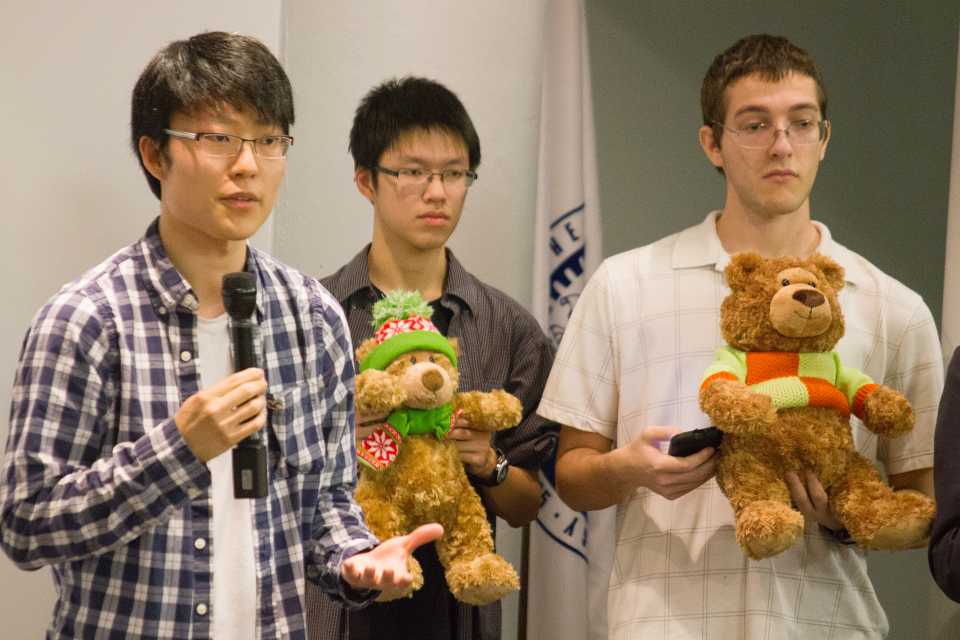On Tuesday, Jan. 19, semi-finalists for the InVenture Prize competed for one of six finalist spots in the final, televised rounds on March 13.
“It’s like American Idol for nerds,” said Dr. Craig Forest, one of the competition’s founders and a member of the Prize’s Faculty Organizing Committee.
“In the future, the InVenture Prize will be the biggest academic invention competition in the world.”
Winners of the InVenture prize are given a free US Patent for their invention and guaranteed a spot in Georgia Tech’s prestigious start up accelerator program, Flashpoint. 1st place wins $20,000 and 2nd place wins $10,000. There is also a People’s Choice Award, with winnings of $5,000, where fans vote for their favorite invention from the final round.
“The best part of the competition has been the feedback we have received from judges and other contestants. We have used them to enhance our product in many ways,” said Steven Wojcio, one of the semi-finalists.
Wojcio’s invention is a software patch for PIN readers on mobile phones.
“It collects biometric information and uses it to produce a profile for the owner of the PIN. Then, it compares later entries to the profile to determine if the person attempting to verify his/her identity is the actual owner of the PIN,” Wojcio said.
In the preliminary rounds, over 150 teams competed for one of the 20 semi-finalist spots. From these inventions, 6 were chosen for the final round. Inventions are judged on their “Innovation, Marketability, Market Size, Inventor Passion and Probability of Becoming a Successful Business.”
“[The most challenging part is] having the courage to stand there with your idea and show people in the real world. Putting yourself out there is really humbling,” Forest said.
Another semi-finalist, Basheer Tome spent over 600 hours inventing a new toaster, Hue, that toasts by color.
“Hue harnesses the power of an array of color sensors via a simple interface in order to intuitively and smartly toast bread to that perfect shade of golden brown. Hue’s sensors see both sides of the pieces of bread so that when the user selects the shade of brown he/she wants the toaster then keeps the heating element on until the toast reaches that color,” Tome said.
“The project started as a quest to make toasters easier to use. After a bit of brainstorming and ideation, I ran into the idea of using color since that’s normally how people gage how ‘done’ toast is,” Tome said.
“I hope that Tech will be perceived as a place where students who are interested in starting their own thing can do that.”
Chris Taylor, another semi-finalist, created a line of fully autonomous mechanized dog toys.
“For most dog toys currently on the market, the owner needs to be playing with the dog, for example throwing the ball, tugging the rope, squeaking the toy, etc. With my line of dog toys the owner will flip a switch and the toys will move around and generate excitement and interactivity for the dog with little to no human input required,” Taylor said.
In conclusion, Forest recognized how impactful the InVenture prize has the potential to one day be.
“In the future, the InVenture Prize will be the biggest academic invention competition in the world. Any student who has a bright idea and wants to put it out there will be able to. I hope that Tech will be perceived as a place where students who are interested in starting their own thing can do that,” Forest said.
